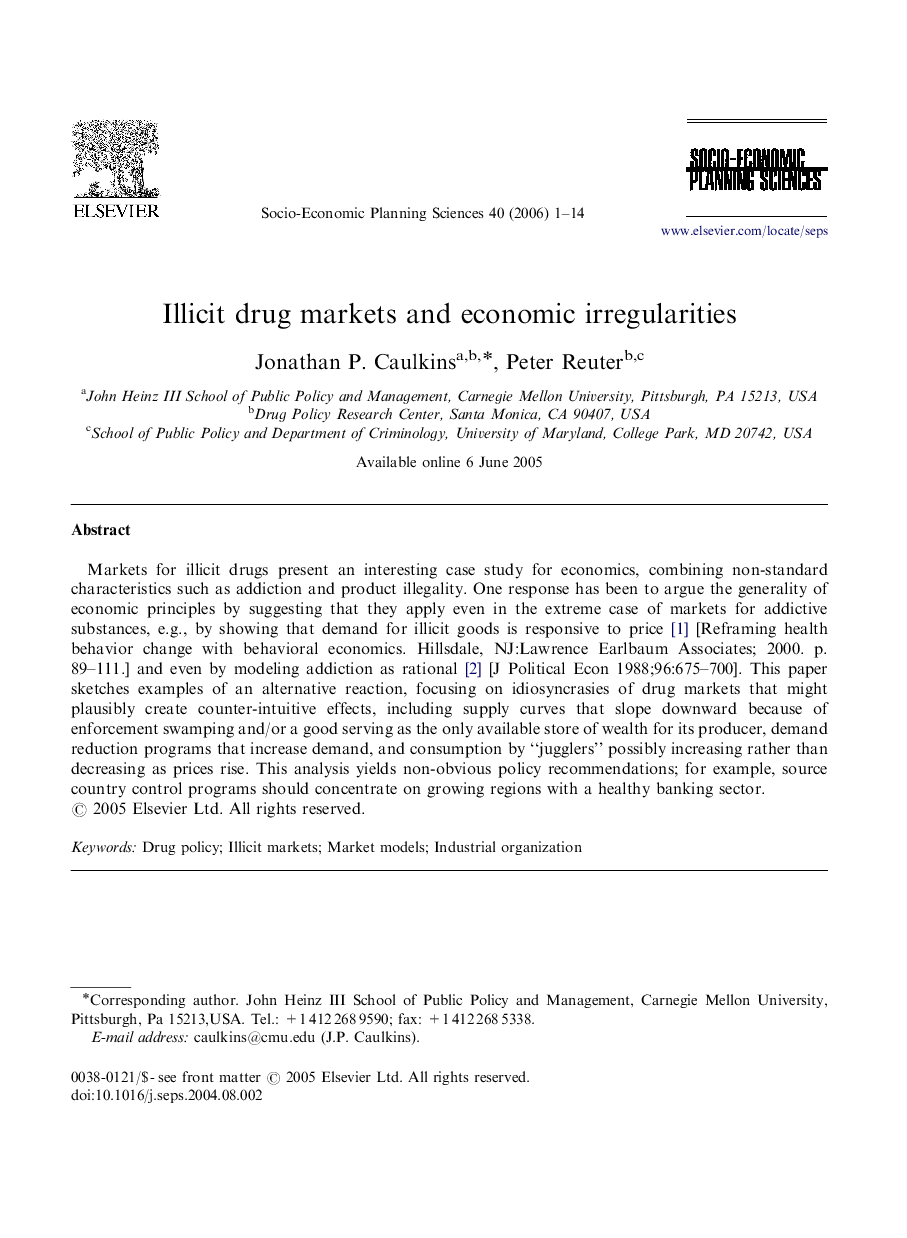| Article ID | Journal | Published Year | Pages | File Type |
|---|---|---|---|---|
| 987718 | Socio-Economic Planning Sciences | 2006 | 14 Pages |
Markets for illicit drugs present an interesting case study for economics, combining non-standard characteristics such as addiction and product illegality. One response has been to argue the generality of economic principles by suggesting that they apply even in the extreme case of markets for addictive substances, e.g., by showing that demand for illicit goods is responsive to price [1] [Reframing health behavior change with behavioral economics. Hillsdale, NJ:Lawrence Earlbaum Associates; 2000. p. 89–111.] and even by modeling addiction as rational [2] [J Political Econ 1988;96:675–700]. This paper sketches examples of an alternative reaction, focusing on idiosyncrasies of drug markets that might plausibly create counter-intuitive effects, including supply curves that slope downward because of enforcement swamping and/or a good serving as the only available store of wealth for its producer, demand reduction programs that increase demand, and consumption by “jugglers” possibly increasing rather than decreasing as prices rise. This analysis yields non-obvious policy recommendations; for example, source country control programs should concentrate on growing regions with a healthy banking sector.
